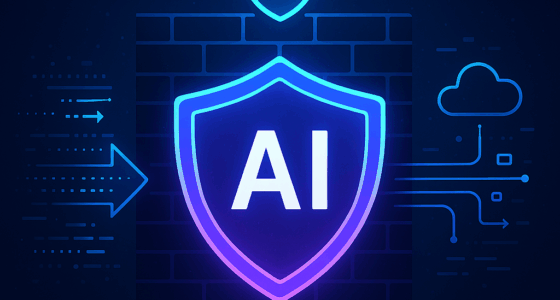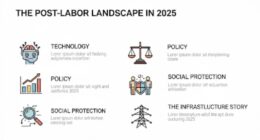As artificial intelligence accelerates from algorithmic novelty to enterprise infrastructure, the physical foundations behind AI—infrastructure superclusters—are transforming into strategic assets. These massive data complexes, purpose-built to train and deploy the world’s most advanced AI models, are becoming the new industrial power plants of the 21st century. Companies like Meta, Microsoft, Google, Amazon, and Huawei are investing tens of billions into these compute fortresses, while governments worldwide are reassessing national AI sovereignty through the lens of hardware and energy.
This article defines the AI supercluster, explores the most advanced examples—including Meta’s Prometheus and Hyperion, Microsoft’s Azure AI centers, Google’s TPU megaclusters, and Huawei’s CloudMatrix—and unpacks the geopolitical, environmental, and economic implications of these planetary-scale facilities.
What Is an AI Supercluster?
An AI infrastructure supercluster refers to a hyperscale compute facility specifically engineered to train and operate frontier AI models, such as large language models (LLMs), multimodal systems, or autonomous agents. These systems require orders of magnitude more compute, bandwidth, and energy than traditional cloud applications. Key characteristics include:
- Compute Density: Racks filled with tens of thousands of high-performance AI chips (e.g., Nvidia H100s, Google TPUs, Amazon Trainium). A single supercluster may exceed 500,000 GPU-equivalents.
- Power Consumption: Ranges from hundreds of megawatts to multiple gigawatts (GW). For perspective, 1 GW can power about 1 million homes.
- Network Fabric: Infiniband or custom optical interconnects with low-latency, high-bandwidth topology for distributed training.
- Cooling Architecture: Liquid cooling, rear-door heat exchangers, and submerged servers are increasingly standard to manage thermal loads.
- AI Specialization: Optimized for training/fine-tuning large models, not general-purpose workloads. Designed for AI throughput, not multi-tenancy.
These clusters are effectively AI factories, transforming electricity into intelligence.
Meta’s Prometheus and Hyperion: AI at Gigawatt Scale
Prometheus (Launching 2026)
Meta’s Prometheus supercluster represents its first foray into the 1 GW+ compute class, making it one of the most powerful AI centers ever attempted. This facility is designed to host over 350,000 Nvidia H100 GPUs, alongside Meta’s own in-house MTIA Artemis chips. Meta will use it to train next-gen models like LLaMA 3 and potentially support its Meta Superintelligence Labs in their quest for AGI.
- Power Scale: ~1 GW
- Compute Nodes: 600,000 GPU-equivalent units
- Primary Use: Training superintelligence-scale models
- Design Focus: Low-latency interconnect, full-stack integration
Hyperion (In Planning, 2027+)
Meta’s longer-term project, Hyperion, is an even more ambitious cluster designed to scale to 5 GW, potentially across multiple regions or continents. It would be capable of hosting multiple foundation model training pipelines simultaneously, supporting Meta’s AI assistant roadmap and integrated AI across Instagram, WhatsApp, and VR environments.
These investments are tied to CEO Mark Zuckerberg’s strategic pivot: from metaverse-first to AI-first. Capital spending for 2025 alone is projected to be $65–70 billion, with much directed toward these clusters.
Microsoft: Azure AI Supercomputers for OpenAI and Enterprise
Microsoft has emerged as the AI infrastructure partner of choice for OpenAI, powering the training of GPT-3.5, GPT-4, and future models via custom Azure supercomputers. Its Iowa-based supercluster—rumored to be NDv4- and ND H100-based—is one of the most sophisticated systems globally.
- Investment Scale: ~$100 billion over multiple years (Project Stargate)
- AI Chips: Tens of thousands of Nvidia GPUs + internal Maia 100 AI chips
- Design Partnerships: Co-engineered with Nvidia and OpenAI
- Commercialization: Azure OpenAI Services, Copilot, and fine-tuning for enterprise customers
Microsoft’s approach is vertically integrated: it combines proprietary chips, Azure’s global cloud reach, and OpenAI’s models to deliver AI-as-a-service at industrial scale.
Google: TPU Megaclusters and Research-Oriented Scale
Google’s TPU v4 and v5 clusters are not just fast—they’re tightly integrated with Google’s AI models (PaLM, Gemini, Gemini Pro). These clusters are privately optimized, giving Google massive cost and performance advantages.
- Hardware: Custom Tensor Processing Units (TPUs)—over 100,000 active nodes
- Performance: Exascale training capabilities
- Use Cases: Google DeepMind models, Google Cloud AI APIs, Bard/Gemini
- Efficiency Advantage: TPU infrastructure estimated to cost ~20% of equivalent Nvidia deployments
TPU clusters represent a model of hardware-software co-design that other hyperscalers are emulating. Google’s ability to rapidly iterate on infrastructure and model design within a closed loop positions it as an AI compute superpower.
Huawei and China’s Sovereign Compute Ambition
Facing export controls from the U.S., China has doubled down on sovereign AI infrastructure, with Huawei leading the charge.
Huawei CloudMatrix 384
- Chips: 384 x Ascend 910C AI processors
- Architecture: Full-rack optical networking (no external switches)
- Performance: ~300 PFLOPs BF16 compute
- Use Case: Sovereign LLM training for government and enterprise
Huawei’s optical interconnects and stacked Ascend chiplets are designed to compete with Nvidia’s DGX systems under sanctions. Combined with exascale-scale plans by Chinese data center operators, China is actively decoupling from U.S.-led GPU infrastructure.
Strategic Implications: Why Superclusters Matter
1. Compute Nationalism
Nations increasingly see compute as a matter of sovereignty and security. Training AGI-capable models requires facilities on the gigawatt and exaFLOP scale. Nations without their own superclusters will depend on foreign infrastructure—politically and economically risky.
2. Energy Infrastructure and Grid Strain
AI superclusters demand sustained, reliable power. Meta’s Hyperion cluster alone may require the equivalent output of a nuclear plant. This places new pressures on:
- Local power grids
- Carbon reduction targets
- Cooling water access (liquid cooling is now mandatory)
3. Climate Impact
Energy use and AI carbon footprints are emerging policy issues. A 1-GW supercluster running continuously could emit as much CO₂ as 200,000 homes annually—unless fully powered by renewables.
4. Economic Centralization
Only a handful of firms and nations can afford to build these facilities. This centralizes AI model creation and raises the bar for newcomers, further concentrating AI power and influence in a few hands.
Risks and Constraints
– Hardware Bottlenecks
Superclusters are GPU-hungry. Nvidia’s chips remain backlogged; even Meta and Microsoft are limited by supply.
– Latency and Edge Deployment
Centralized training doesn’t guarantee global AI availability. Inferencing across geographies still requires distributed edge networks.
– Geopolitical Conflict
A supercluster could become a strategic asset—or target. Policymakers need to consider cybersecurity, sabotage, and data sovereignty in facility design.
Conclusion
AI superclusters are not just data centers; they are the new digital power plants—scaling energy into intelligence. They represent sovereignty, capability, and economic leverage in the AI era. As Meta, Microsoft, Google, and Huawei build infrastructure at planetary scale, the ability to train and deploy advanced AI will become increasingly bounded by physical and geopolitical realities.
For executives and policymakers, this is not a technical curiosity—it’s a strategic imperative. Owning or accessing AI superclusters will define who leads the next wave of innovation, economy, and governance. The time to plan, regulate, and invest is now.









